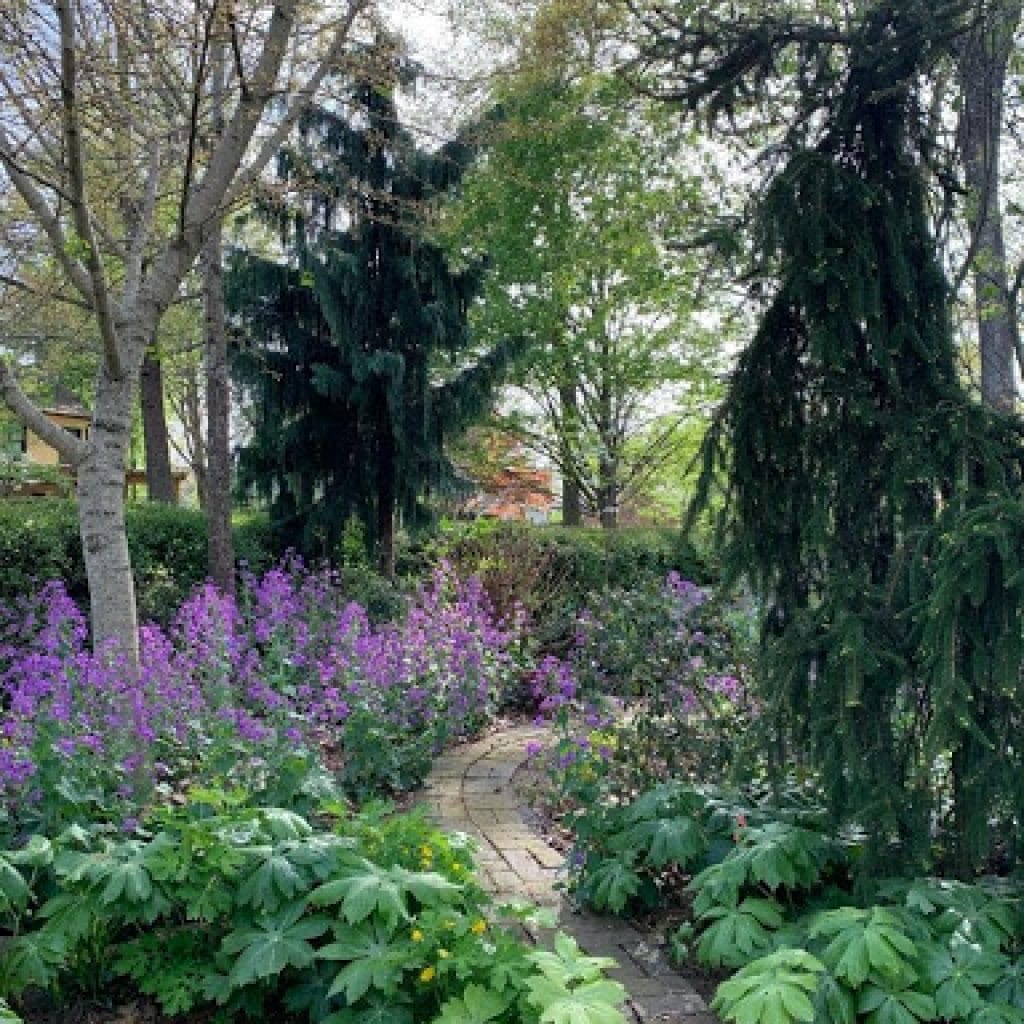Manicured Versus Natural Lawns: What’s the Right Look?
Do you keep your hedges trimmed, or do you let them loose? Here in North America and even Knoxville, Tennessee, the former has become the golden standard of what constitutes a well-maintained landscape.
However, it wasn’t long ago that a “natural” lawn – one that’s free of all the perfectly pruned vegetation – was a typical sight.
The reality is that a natural landscape can look just as great (if not better) than a manicured one and can have some advantages too.
This post will provide tips on easy garden ideas and grass alternatives revolving around natural, non-manicured garden looks.
What Can I Use Instead of Turf Grass in My Yard?
Sure, the Joneses’ gardens may have perfectly pruned hedges and bushes, with grassy pastures so well-groomed they can win awards. Human nature dictates what we’d prefer to blend in rather than stand out, so you might feel compelled to do the same.
It’s the reason why Americans have spent the last 400 years cutting, trimming, and mowing lawns to make their gardens pretty. But take a page from the book of natural gardening – there’s much more you can do to a landscape than give it the golf course treatment.
Instead of the typical lawn, you can try several grass alternatives for your backyard. You could opt for a dry garden using ornamental grasses, stone chips, and pea gravel.
You can get more experimental and plant sprawling, spreading plant species (a.k.a groundcover) that have a more aesthetic and functional impact than regular grass does. And if you’re not big on plant care and maintenance, you could opt for a rock garden instead.
Your options are limitless.
Ornamental Grasses as a Lawn Alternative
There’s the grass we’re all accustomed with – the perfectly trimmed green blades of glory – and then there are more eccentric and striking grasses. These are ornamental grasses.
They take on various odd shapes, growing in clumps or sweeping patterns, and bloom in bright shades and colors. Aside from the diverse range of looks, ornamental grasses are low-maintenance – they require little watering and can thrive without fertilization.
Ideally, the best ornamental grasses to plant are the ones that are native to your location. For example, here in Tennessee, common ornamental grass species include:
- Fountain grass
- Pink Muhly grass
- Feather Reed grass
- Various sedges
- Little Bluestem
The critical reminder for growing ornamental grasses is to avoid overwatering them. I recommend you adjust any irrigation programming, so these fantastic species don’t drown.
Plant Ground Covers for Sustainable Landscape Design
Groundcover plants essentially grow in a sprawling formation across lawns, so don’t expect them to grow tall – but that’s a good thing.
First and foremost, the lack of groundcovers’ height means you don’t have to mow them, meaning less maintenance. That makes groundcovers a great grass alternative for your backyard.
They also grow and cover the ground (excuse the pun) quite fast, smothering weeds and filling in pathways.
The speed at which they grow and the area they cover will depend on choosing the suitable species for your location. Some grow best in hot and dry climates, while others do better in moist and cool environments.
That’s why I recommend native groundcover species. Here in Tennessee, your best bets are:
- Creeping St. Johns Wart
- Fragrant sumac
- Epimedium (Barrenwort)
- Dwarf Plumbago
- Native pachysandra
The benefit of these groundcovers is that they can replace your lawn, eliminate the toxic chemicals associated with intense lawn care and provide a burst of color and texture that will stand out compared to traditional yards.

Alternatives to Turf Grass: Plant Native Perennial Species
You don’t have to let exotic weeds and plants overtake your garden – just include strategically placed plant beds or meadows (even in regular lawns). I highly recommend that you choose native perennial species, which I’ve spoken at length about.
These plants often provide your garden with a burst of bright colors thanks to their flowers. They also carry additional benefits such as food sources to local wildlife, including bees, birds and butterflies.
Best of all, native species are low-maintenance plants, requiring minimal fertilization, watering and grooming.
Every year, when the average person is mowing and seeding their green grass, you can sit back and watch an assortment of colors and shapes blossom in your backyard.
Easy Small Garden Design: Rock Gardens
Let’s look at one last idea, one that’s radical and unorthodox for most – a rock garden. They are a fantastic grass alternative and the perfect solution for a time-pressed, perhaps, the brown-thumbed homeowner.
Rock gardens offer the best of two worlds: they’re easy on the hands, and they’re easy on the eyes.
Once “planted,” your rock garden allows you to eschew the constant weeding and watering of a lawn. It can also look artful if you arrange it well, and it’s an easy garden idea to make your landscape design stand out.
You can create a rock garden with an assortment of materials ranging from gravel to stone chips. If you’re creative, you can choose rocks and stones with distinct colors and shapes to create a more vibrant appearance.
Remember, rocks and stones don’t have to look dull and grey!
Easy Garden Designs When Going Au Naturel – Trust a Landscape Architect in Knoxville
Like anything else in landscaping design, balance is critical, and some of these options will work better for you than others. Some of the above are easy garden design ideas, while others may take some brainstorming to create with beauty and lasting results.
Nevertheless, when you choose the best grass alternative for your garden, you’ll provide yourself with an ideal combination of aesthetics and function that a traditional lawn may not offer. And if effect, you won’t feel like the desire to keep up with the Joneses – the Joneses may want to keep up with you instead!
Need help picking a grass alternative to a traditional lawn? Get in touch with me for a consultation.





